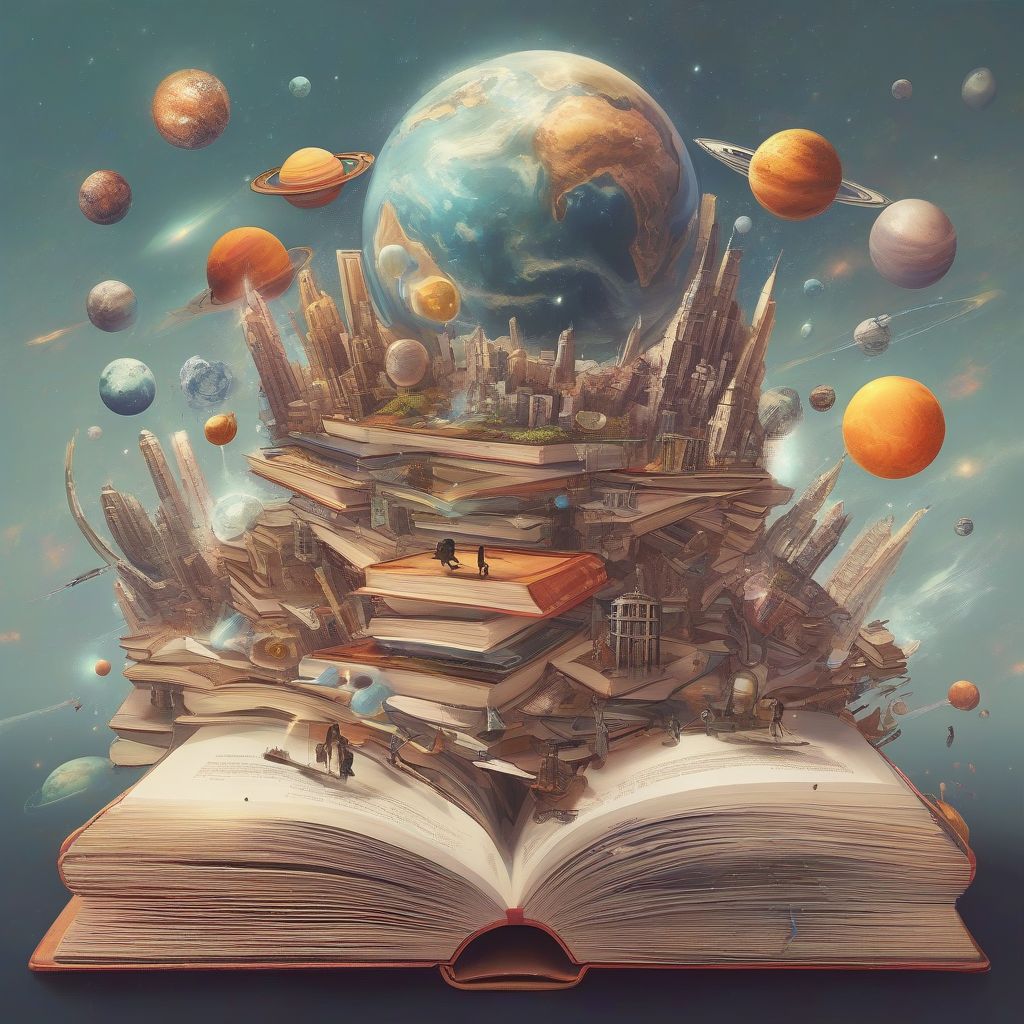Have you ever been lost in the vast expanse of science fiction, unsure which author’s galaxy to explore next? Maybe you’ve wondered how the cyberpunk dystopias of William Gibson stack up against the space operas of Ursula K. Le Guin. Comparing science fiction authors can be like comparing stars: each unique, burning with its own themes and ideas, yet part of the same magnificent constellation.
This exploration will equip you with the tools to navigate the cosmos of science fiction literature. We’ll delve into the various facets of an author’s work, from world-building to philosophical underpinnings, and learn how to appreciate their individual brilliance while drawing insightful comparisons.
Unpacking the Elements of Comparison
Comparing different authors requires a closer look at the building blocks of their literary creations. Here are some key aspects to consider:
1. World-Building: Architecting Universes
Genre and Subgenre: Does the author typically write hard sci-fi grounded in scientific accuracy, or do they delve into the more fantastical realms of space opera? Identifying their preferred playground sets the stage for understanding their thematic choices.
World Complexity and Originality: Is their universe meticulously crafted with intricate details and rules, or is it a more familiar backdrop for exploring human themes? Consider the sprawling societies of Frank Herbert’s Dune against the isolated setting of Andy Weir’s The Martian.
Social and Political Structures: How does the author envision societal structures? Are they utopian visions, dystopian warnings, or something in between? Comparing the social commentary of Margaret Atwood’s The Handmaid’s Tale with the anarchist leanings of Ursula K. Le Guin’s The Dispossessed offers a fascinating study in contrasts.
2. Characters: The Heart of the Narrative
Character Archetypes and Development: Are the characters complex individuals with evolving motivations, or do they serve as archetypes to propel the plot? Compare the flawed humanity of Ray Bradbury’s characters in Fahrenheit 451 to the more archetypal heroes and villains of Star Wars.
Representation and Diversity: Does the author feature diverse characters in terms of gender, race, sexuality, or ability? Examining the representation within their narratives reveals the author’s social awareness and commitment to inclusivity. N.K. Jemisin’s Broken Earth trilogy, for example, is lauded for its complex portrayal of race and power.
3. Themes: The Soul of the Story
Major Themes and Philosophical Perspectives: What are the recurring ideas that the author grapples with? Are they concerned with technological advancements, social justice, environmental collapse, or the nature of consciousness? Examining the philosophical underpinnings of their work provides a deeper understanding of their message.
Exploration of Human Nature: How does the author use science fiction as a lens to examine the human condition? Do their stories highlight our capacity for both great love and terrifying destruction? Consider the contrasting views on human nature in Isaac Asimov’s optimistic Foundation series versus the bleaker outlook in Cormac McCarthy’s The Road.
4. Style and Language: The Author’s Voice
Prose and Narrative Structure: Is the writing style lyrical and descriptive, or concise and action-oriented? Does the author employ unique narrative structures like multiple perspectives or unreliable narrators? Comparing the elegant prose of Octavia Butler to the hard-boiled style of Philip K. Dick reveals distinct authorial voices.
Use of Imagery and Symbolism: How does the author use language to paint vivid pictures and convey deeper meaning? Do they employ scientific jargon, create new lexicons, or utilize metaphor and allegory to enrich their narratives?
Drawing Meaningful Comparisons
Once you’ve analyzed individual authors through these lenses, you can begin to draw insightful comparisons:
- Identify Similarities and Differences: Note where authors align in their world-building, thematic concerns, or character portrayals. Conversely, highlight the stark contrasts that set them apart. Do they share a pessimistic view of technology, or do their works offer contrasting visions of the future?
- Contextualize Historical and Cultural Influences: Consider the authors’ backgrounds, the sociopolitical climate they were writing in, and how these factors shaped their works. A comparative analysis of H.G. Wells’ The Time Machine and Aldous Huxley’s Brave New World, for instance, reveals how different anxieties of the early 20th century fueled distinct dystopian visions.
- Engage in Critical Discussion: There’s no single “right” interpretation. Embrace the subjective nature of art and engage in discussions with fellow readers. Online forums, book clubs, and academic articles provide platforms for sharing interpretations and deepening your understanding.
 Comparing Science Fiction Authors
Comparing Science Fiction Authors
Conclusion: Expanding Your Literary Horizons
Comparing science fiction authors is not about declaring one superior to another. It’s about appreciating the multifaceted nature of the genre and gaining a deeper understanding of the authors’ unique contributions.
So, the next time you find yourself browsing the science fiction aisle, remember the tools you’ve acquired. Delve into the worlds, analyze the themes, and engage in thoughtful comparisons. You might just discover new favorites, gain fresh perspectives, and deepen your appreciation for the boundless imagination of science fiction.
[amazon bestseller=”science fiction”]
